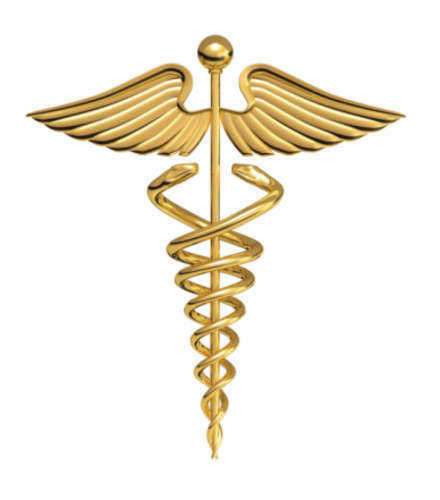
Medical Release Form: Everything You Need to Know
Informed consent is a crucial aspect of medical care. Patients have the right to know what medical care they will receive and to decide if they want to undergo treatment or procedures. However, healthcare providers also need to protect themselves from legal action. This is where the Medical Release Form comes in.
What is a Medical Release Form?
A Medical Release Form, also known as a medical waiver or consent form, is a legal document that allows healthcare providers to share a patient’s medical information with a third party. This could be another doctor, hospital, insurance company, or anyone else who needs access to the patient’s medical records.
Why is a Medical Release Form necessary?
A Medical Release Form is necessary because of HIPAA, the Health Insurance Portability and Accountability Act. HIPAA protects patient privacy and ensures that healthcare providers keep medical records confidential. Without a Medical Release Form, a healthcare provider cannot share a patient’s medical information with anyone outside of their organization.
When is a Medical Release Form needed?
A Medical Release Form is needed in several situations. Here are some examples:
1. A patient wants to see a new doctor
If a patient wants to see a new doctor, they will need to fill out a Medical Release Form so that the new doctor can access their medical records. This is important because the new doctor needs to know the patient’s medical history in order to provide the best care possible.
2. A patient is admitted to a hospital
If a patient is admitted to a hospital, they will need to fill out a Medical Release Form so that the hospital can access their medical records. This is important because the hospital needs to know the patient’s medical history in order to provide the best care possible.
3. A patient is applying for life insurance
If a patient is applying for life insurance, the insurance company may require a Medical Release Form so that they can access the patient’s medical records. This is important because the insurance company needs to know the patient’s medical history in order to determine the patient’s risk level.
4. A patient is involved in a lawsuit
If a patient is involved in a lawsuit, the court may require a Medical Release Form so that the patient’s medical records can be accessed. This is important because the medical records may be relevant to the case and could help determine the outcome.
How to fill out a Medical Release Form
Filling out a Medical Release Form is a straightforward process. The exact format may vary depending on the healthcare provider, but the following information is typically required:
1. Patient’s name
2. Patient’s date of birth
3. Name and address of the healthcare provider who will be releasing the information
4. Name and address of the person or organization who will be receiving the information
5. The type of information being released (e.g. medical records, test results, etc.)
6. The purpose of the release (e.g. for a new doctor, for an insurance company, etc.)
7. The date range for which the information is being released
8. Patient’s signature and date
It is important to note that a patient can specify which information they want to be released and which information they want to be kept confidential. For example, a patient may want to release their medical records but keep their psychiatric records confidential.
Is a Medical Release Form the same as a Power of Attorney?
A Medical Release Form is not the same as a Power of Attorney. A Power of Attorney is a legal document that allows someone else to make medical decisions for a patient if they are unable to make those decisions themselves. A Medical Release Form only pertains to a patient’s medical information.
How long is a Medical Release Form valid?
A Medical Release Form is typically valid for one year. However, a patient can specify a different timeframe if they choose. It is important to note that a patient can revoke a Medical Release Form at any time.
What are the risks of signing a Medical Release Form?
There are some risks associated with signing a Medical Release Form, as the patient’s medical information is being shared with a third party. However, these risks may be outweighed by the benefits of sharing the information, such as receiving better healthcare or obtaining life insurance.
It is important for patients to read the Medical Release Form carefully and understand who will be receiving their medical information and for what purpose. Patients should also ensure that the healthcare provider they are releasing the information to is reputable and trustworthy.
What if I don’t want to sign a Medical Release Form?
While a Medical Release Form is usually necessary in certain situations, a patient has the right to refuse to sign one. However, this may limit the patient’s ability to receive certain medical care or obtain life insurance.
Conclusion
A Medical Release Form is a legal document that allows healthcare providers to share a patient’s medical information with a third party. While there are risks associated with signing a Medical Release Form, the benefits may outweigh them. Patients should read the form carefully and understand who will be receiving their medical information and for what purpose. Finally, it is important to remember that a patient has the right to refuse to sign a Medical Release Form.
If a patient wants to see a new doctor, they will need to fill out a Medical Release Form so that the new doctor can access their medical records. This is important because the new doctor needs to know the patient’s medical history in order to provide the best care possible.
If a patient is admitted to a hospital, they will need to fill out a Medical Release Form so that the hospital can access their medical records. This is important because the hospital needs to know the patient’s medical history in order to provide the best care possible.
If a patient is applying for life insurance, the insurance company may require a Medical Release Form so that they can access the patient’s medical records. This is important because the insurance company needs to know the patient’s medical history in order to determine the patient’s risk level.
If a patient is involved in a lawsuit, the court may require a Medical Release Form so that the patient’s medical records can be accessed. This is important because the medical records may be relevant to the case and could help determine the outcome.
2. Patient’s date of birth
3. Name and address of the healthcare provider who will be releasing the information
4. Name and address of the person or organization who will be receiving the information
5. The type of information being released (e.g. medical records, test results, etc.)
6. The purpose of the release (e.g. for a new doctor, for an insurance company, etc.)
7. The date range for which the information is being released
8. Patient’s signature and date
A. Format
1. Identify the subject – You must first identify the person or people that will be covered by the medical release form. Particularly, you want to identify who will give authority to consent to the medical treatment, in the absence of a parent or guardian. Also, remember that an individual form will be required for each person that will be covered by a medical release form.
2. Detail each and every medical procedure that is not included on the consent form. The medical release form must legally specify whether all medical procedures are to be covered or if certain areas are not to be consented to. Specify in detail the procedures not allowed, or your medical release form may be found to be ineffective.
3. Provide a specific time frame for when the medical release form will cover. You can specify whether the release is valid for a certain time period or if it is effective until revoked. Open ended medical release forms must be more detailed and meet a stricter mode of writing.
4. If applicable, list any physicians or treatment places that are preferred. While this may only serve as a reference for a medical professional to indicate where the approving party desires to have medical treatment, it is usually not binding.
5. Provide the full contact information of the person who will be under the care of the appointed party. Provide their name, date of birth, address, and any other contact information. Each child must have their own form with their own contact information provided.
B. Instructions
1. State the subject – Identify in your form the following:
– Identify the person or people that will be covered by the medical release form.
– Identify who will give authority to consent to the medical treatment, in the absence of a parent or guardian.
– Remember that an individual form will be required for each person that will be covered by a medical release form.
2. Detail each and every medical procedure that is not included on the consent form.
– The medical release form must legally specify whether all medical procedures are to be covered or if certain areas are not to be consented to.
– Specify in detail the procedures not allowed, or your medical release form may be found to be ineffective.
3. Provide a specific time frame for when the medical release form will cover.
– Specify whether the release is valid for a certain time period or if it is effective until revoked.
– Open ended medical release forms must be more detailed and meet a stricter mode of writing.
4. If applicable, list any physicians or treatment places that are preferred.
– While this may only serve as a reference for a medical professional to indicate where the approving party desires to have medical treatment, it is usually not binding.
5. Provide the full contact information of the person who will be under the care of the appointed party. Provide:
– name
– date of birth
– address
– and any other contact information.
Each child must have their own form with their own contact information provided.























